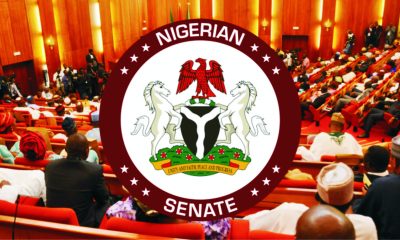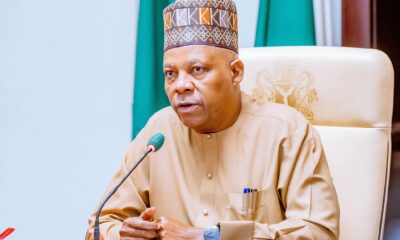Business
Two Stocks That Play Pivotal Roles In America’s Infrastructure
Rolling blackouts, freezing homes, and skyrocketing electricity prices. Back in February, Texas’ primary electric grid suffered a one-two punch wrought by the deep freeze and off-the-charts demand for power as power plants struggled to keep up with heating demand. Power outages such as the Texas one are not only becoming much more frequent compared to the situation two decades ago but are also increasing in severity mainly due to climate stresses and a power grid that’s increasingly unable to hold up. The Texas blackouts marked the third time the electric system failed to perform adequately in winter in recent years (1989, 2011, and 2021).
The devastating blackouts once again brought into sharp focus the fact that the United States is relying on an aging electrical grid that’s increasingly unstable, underfunded, and incapable of taking us to a new energy future. Despite being the wealthiest country in the world, the U.S. only ranks 13th in the quality of its infrastructure.
Indeed, our power grid is the weakest link in the ongoing energy transition.
Last year, a new study from UC Berkeley and GridLab found that it will be economically feasible for renewable energy to power 90% of a reliable grid by 2035, while only depending on natural gas for 10% of annual electricity production.
Unfortunately, whereas renewable power sources have grown dramatically in recent years, our aging electrical grid is simply incapable of fully integrating them into our energy use, leading to so much potential power wasted.
Yet, therein lies a great investment opportunity.
A Wood Mackenzie analysis has estimated the cost of shifting the U.S. power grid to 100% renewable energy over the next 10 years at a staggering $4.5 trillion. That runs the gamut from constructing and operating new generation facilities, investing in transmission and distribution infrastructure, making capacity payments, delivering customer-facing grid edge technology, and more.
President Biden’s 10-year, $2 trillion American Jobs Plan seeks to re-energize the power grid, upgrade roads, bridges, and water systems and help make U.S. infrastructure more resilient to the impacts of climate change.
But that amount will hardly be enough to go the distance, and private investors will have to step up to the plate. Modernizing the power grid alone will require $300 billion per year spread out over 15 years, or double the current annual spending of $150 billion.
That’s why investing in companies working hard to build the next-generation grid could pay off big dividends for long-term investors.
Here are our top picks, with good dividend growth opportunities serving as a safety net.
Next Era Energy Inc. NEE (-1.74%) is a Florida-based clean energy company and America’s largest electric utility holding company by market cap. NEE (-1.74%) is the world’s largest producer of wind and solar energy, with more than 50,000 megawatts of generating capacity. Next Era Energy is one of the largest utilities in the country, with two electric utilities in Florida. The company owns eight subsidiaries, with the largest, Next Era Energy Services, supplying 5 million homes in Florida with electricity. Next Era Energy Transmission integrates renewable energy and strengthens the electricity grid.
Next Era is quickly establishing itself as a leader in building next-generation grids designed to handle increased loads from renewable energy.
NextEra has been building its grid business both organically through development projects as well as inorganically through acquisitions. For example, earlier this year, NextEra acquired GridLiance for $660 million, adding 700 miles of high-voltage transmission lines across six states. Last year, NEE (-1.74%) won regulatory approval to build a new transmission line in Western New York that will ease grid congestion and facilitate the delivery of renewable energy from the region.
During the company’s latest earnings call, management reiterated its 30×30 goal to install more than 30 million solar panels, or roughly 10,000 megawatts of incremental solar capacity, in Florida by 2030 through one of its subsidiaries, Florida Power & Light (FPL).
Another of NEE (-1.74%)’s subsidiaries, Next Era Energy Partners LP(NYSE: NEP), is publicly listed and pays a 3.4% dividend one of the highest in the industry. NEP acquires, manages, and owns contracted clean energy projects with a preference for businesses with stable, long-term cash flows. NextEra Energy Partners owns interests in dozens of wind and solar projects in the United States, as well as natural gas infrastructure assets in Texas. These contracted projects use leading-edge technology to generate energy from the wind and the sun. The company’s management is shooting for 12-15% dividend growth through 2024, making this an ideal stock for income investors.
Minneapolis-based Xcel Energy Inc. XEL (-2.56%) is a leading electricity and natural gas utility serving 3.6 million customers in Minnesota, Michigan, North Dakota, South Dakota, Wisconsin, Colorado, Texas, and New Mexico.
Xcel boasts nearly 9,000MW in operating capacity for its wind projects and another 1,600MW for solar. The company has increased solar generation by more than 4x since 2011 and plans to grow its wind generation capacity by 50% over the next couple of years.
Like NextEra, Xcel Energy operates one of the biggest and fastest-growing investor-owned transmission systems with more than 20,000 miles of transmission lines across 10 states.
Xcel has a goal to invest $24.3 billion through 2025 to expand its operations, with 25% of that earmarked to expand its transmission business to help support increased renewable energy deployment. One of the company’s top projects is the proposed Colorado Pathway Transmission expansion that will see the company invest up to $1.7 billion to build 560 miles of new transmission lines to support 5.5 gigawatts of new renewable power generation.
As part of the company’s own investment thesis, Xcel shoots for consistent shareholder returns based on 5-7% annual EPS growth and similar dividend growth with a 60-70% payout ratio. The company aims to maintain a 3% dividend yield, meaning there’s room for improvement on the current yield of 2.63%.
Kimani writes for Oilprice.com
By: Alex Kimani
Business
NPA Assures On Staff Welfare
Business
ANLCA Chieftain Emerges FELCBA’s VP
Business
NSC, Police Boost Partnership On Port Enforcement
-
Sports8 hours ago
I Joined Saudi League To Win Titles – Senegal Keeper
-

 Featured4 hours ago
Featured4 hours agoSenate Issues 10-Day Ultimatum As NNPCL Dodges ?210trn Audit Hearing
-

 News6 hours ago
News6 hours agoWDD: Tinubu Seeks Global Action On Drug Abuse
-

 News2 hours ago
News2 hours agoShettima In Ethiopia For State Visit
-
Sports8 hours ago
RSG Advises Rivers Angels, Players, Mgt To Work As A Team …Tasks Them To Win The Final
-
Nation6 hours ago
FG Restates Commitment To Seafarers’ Welfare, Safety
-
Rivers8 hours ago
Students Praise Old Boys/Girls 83 Set Over African Child Day Celebration
-

 News4 hours ago
News4 hours agoRivers Remains Your Willing Partner For Enhanced Maritime Operations, Ibas Tells Navy

